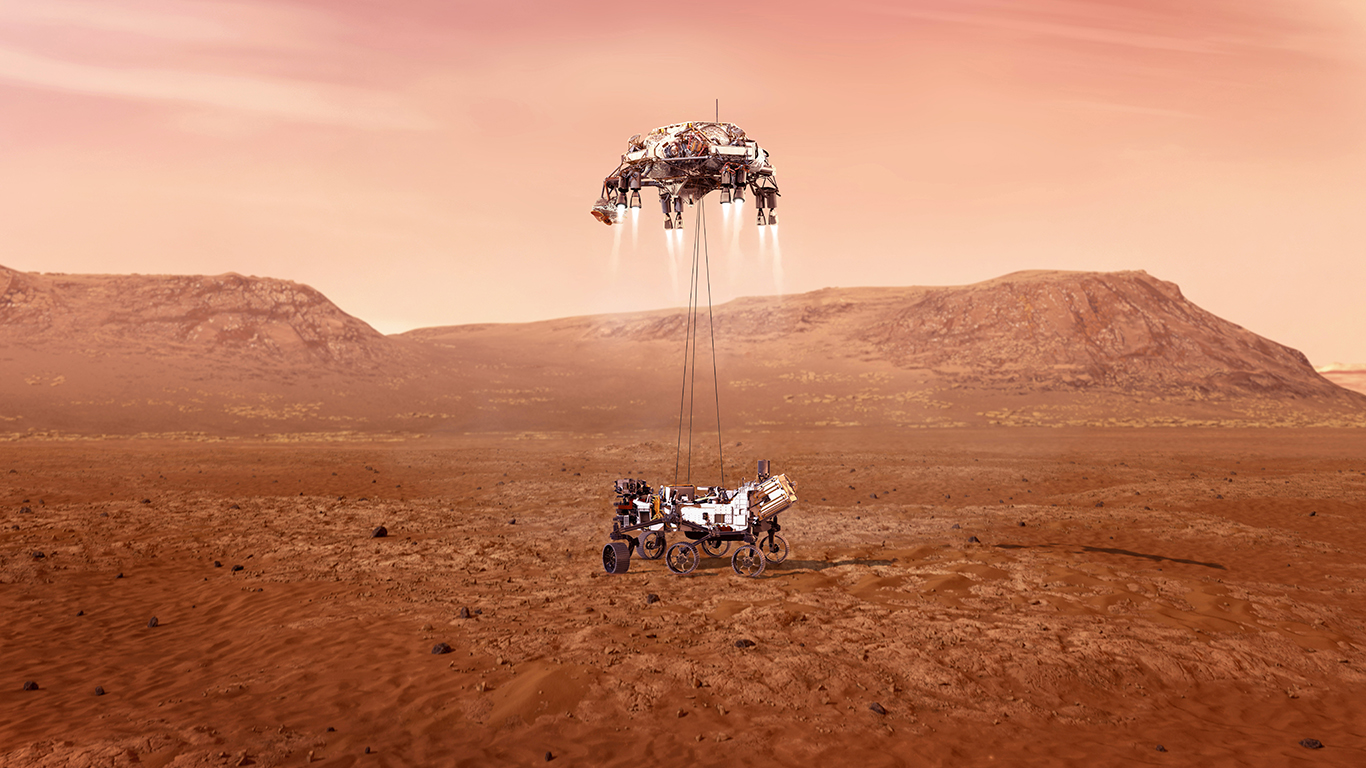
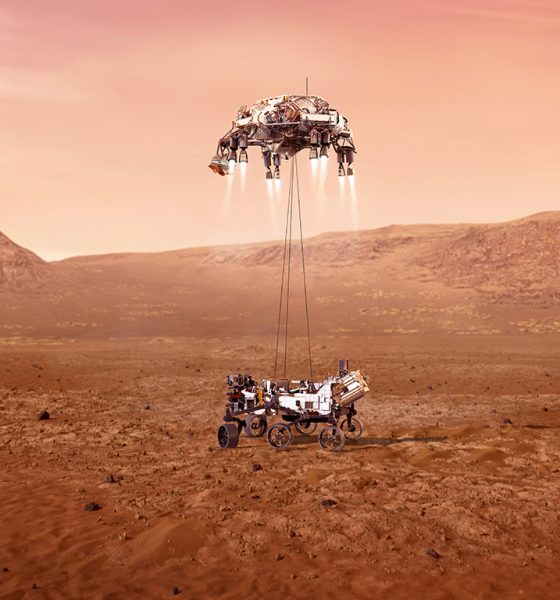
News
NASA braces for ‘7 minutes of terror’ as rover, rocket crane near Mars
NASA’s most ambitious – and difficult – Mars rover mission to date is nearly at the end of its interplanetary journey, but it is just the beginning of the excitement. On Tuesday (Feb. 16) engineers at NASA’s Jet Propulsion Laboratory (JPL) confirmed that Perseverance is doing well and is prepared to attempt a touchdown at about 12:55 p.m. PST (3:55 p.m. EST) on Thursday (Feb. 18).
NASA’s fifth Mars rover, Perseverance, will attempt a tried and true, but terrifying landing method to reach the Martain surface safely. In a process called entry, descent, and landing (EDL) the rover will burst through the Martian atmosphere at 12,500mph (20,000 kph) and slow to just under 2mph (3kph) in about seven minutes – a process which has earned the nickname “seven minutes of terror.”
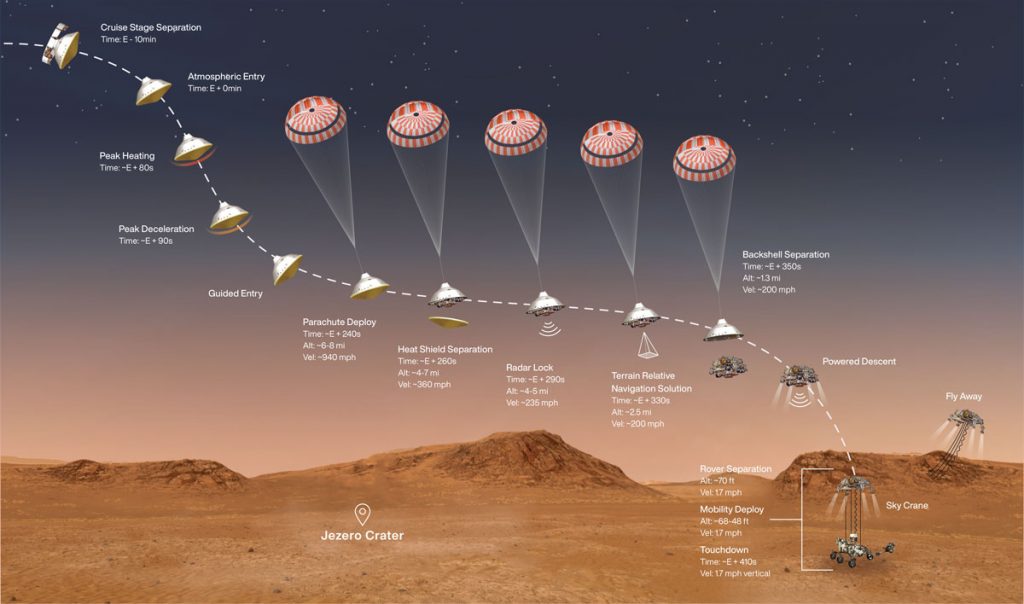
From interplanetary spacecraft to Martian rover in seven minutes
For the past seven months, Perseverance has traveled 300 million miles (480 million kilometers) as an interplanetary spacecraft. When it reaches its final destination of Mars on Feb. 18, the spacecraft will have to shed some layers to prepare to land on the Martian surface. Perhaps the most challenging part of the seven minutes of terror is that Perseverance will conduct every aspect autonomously – engineers back on Earth will not be able to intervene due to the communications time delay caused by the distance between Earth and Mars.
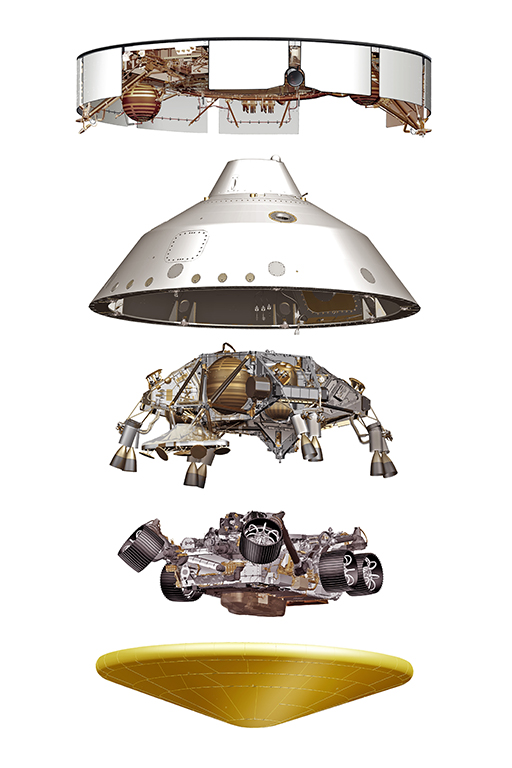
During the first stage of landing known as entry, Perseverance will slam into the relatively thin Martian atmosphere at the neck-break speed of 12,500mph (20,000 kph). At approximately 12:38 p.m. PST (3:38 p.m. EST), 10 minutes prior to entering the Martian atmosphere, the Cruise Stage which has reliably propelled Perseverance on its journey from Earth via solar power will separate. This will initiate the official transition from spacecraft into rover.
To protect the rover and its critical hardware Perseverance is housed inside of a protective covering – called an aeroshell – and is outfitted with a robust heat shield. Small thrusters at the crown of the aeroshell help to reorient itself and ensure that the heat shield is facing in the right direction as it enters the atmosphere. The aeroshell and heatshield will absorb and deflect the brunt of the heat energy – reaching about 2,370 degrees Fahrenheit (about 1,300 degrees Celsius) – caused by the friction of entering the Martian atmosphere at such a high velocity.
Once through peak heating and deceleration, Perseverance will utilize a new technology called Range Trigger to determine its exact location and distance to the surface. The spacecraft will utilize this technology to autonomously determine the optimal time to deploy its supersonic parachute – the largest ever sent to Mars – and separate its heat shield. This is expected to occur at 12:52 p.m. PST (3:52 p.m. EST). Once the heat shield has separated the powered descent stage – and the Perseverance rover itself – will be exposed to the Martian environment.
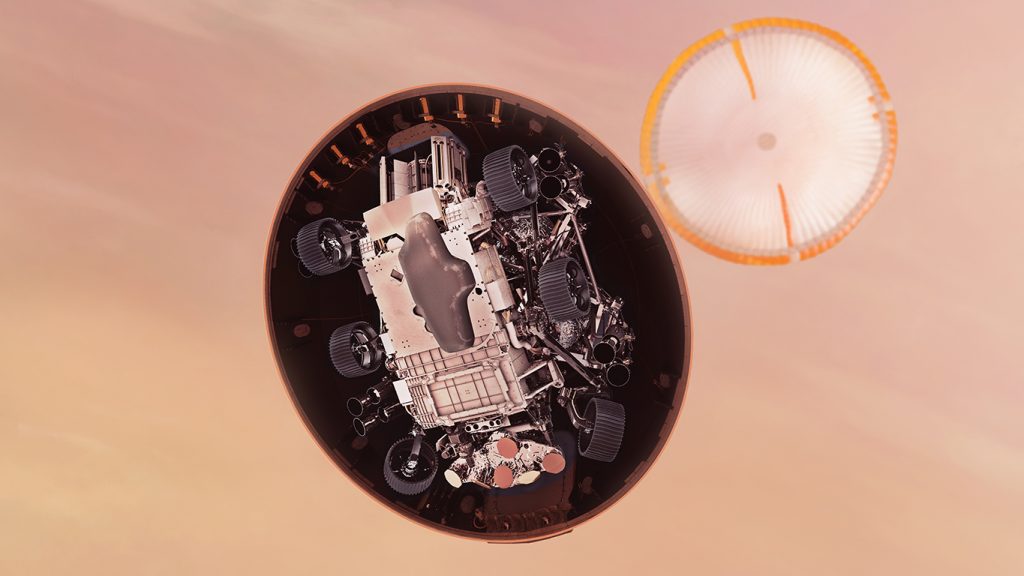
Although a similar descent method has been used in the past with the landing of NASA’s Curiosity rover in 2012, Perseverance’s way of doing things has received a major upgrade.
Once the heat shield has been dispersed, Perseverance will use a radar and cameras to utilize a new landing technology called Terrain-Relative Navigation. Essentially, Perseverance will continuously take images to map out the Martian surface as it descends to determine its exact location. The spacecraft will actively decide and target the best possible safe landing site which can be autonomously changed up to 2,000 feet (600 meters). Then the aeroshell and parachute are jettisoned and it’s the powered descent module’s time to shine.
Using rockets to land, rather than to launch
Just two minutes after ditching the heat shield, at 12:54 p.m. PST (3:54 p.m. EST) and only 1.3 miles (2.1 kilometers) above the surface, the powered descent stage will fire eight throttleable retrorockets to slow the spacecraft’s descent even more and steer it to its chosen landing target. During the powered descent phase, the spacecraft will slow from about 190 mph (306 kph) to just 1.7 mph (2.7 kph).
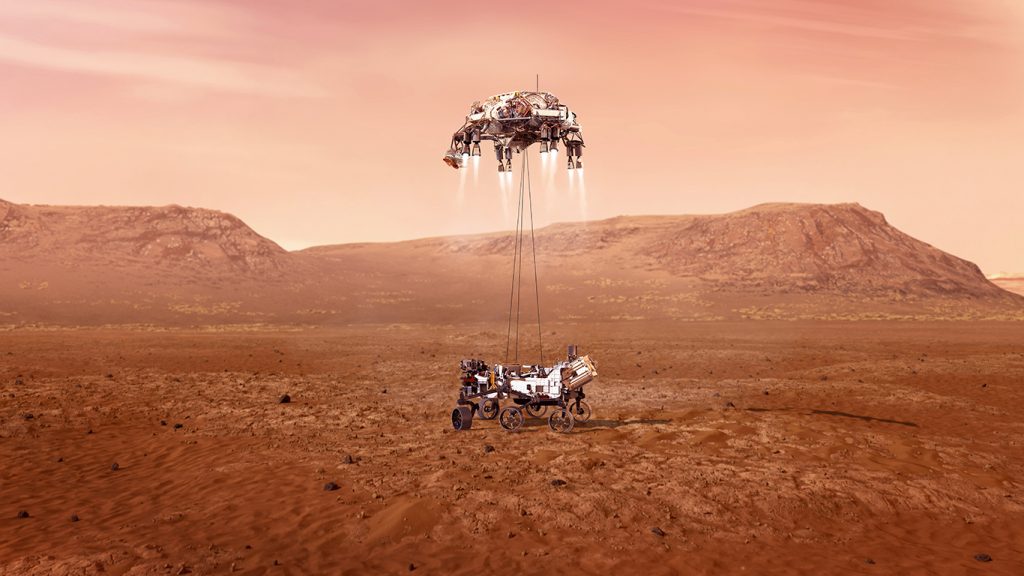
Once the spacecraft determines that it is 65 feet (20 meters) from the surface by utilizing the Terrain-Relative Navigation, the powered descent stage will initiate the sky crane maneuver. In this phase, the Perseverance rover will be delicately lowered to the Martian surface with a system of Nylon cords.
At 12:55 p.m. PST (3:55 p.m. EST) the $2.4 billion NASA Mars 2020 mission will officially touchdown on the surface of Mars in the Jezero Crater. Once safely down, the sky crane will severe the cords and fly off for a crash landing at a safe distance away from the rover.
During the landing attempt, NASA’s Mars Reconnaissance Orbiter will be overhead and constantly sending telemetry back to Earth via NASA’s Deep Space Network. The telemetry will indicate to engineers back at NASA JPL if the landing procedure was successful and will confirm a touchdown at 12:55 p.m. PST (3:55 p.m. EST).
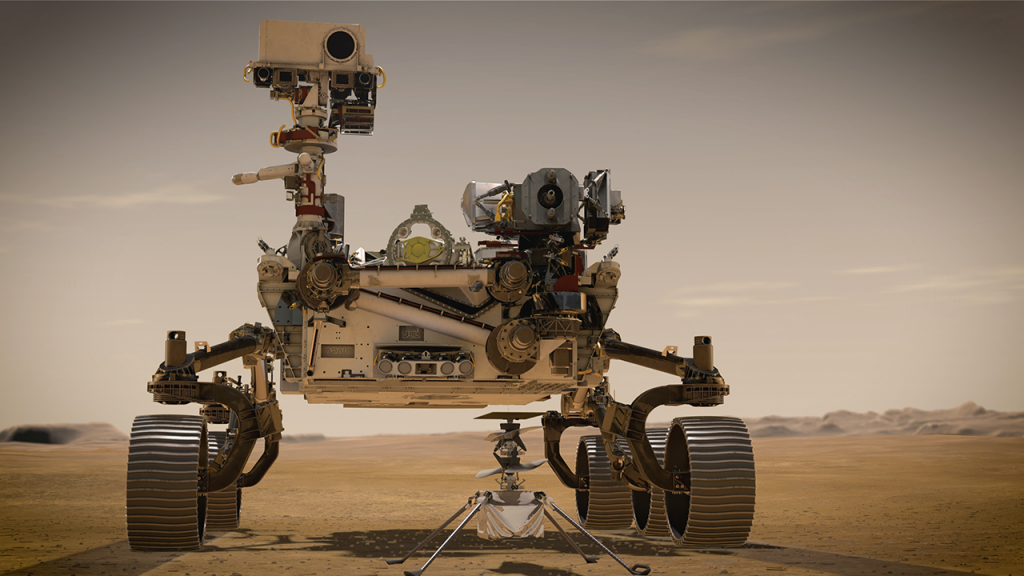
This will be the first time that a NASA Mars rover will be landing with its eyes open, so to speak. NASA hopes that the first images – and sounds – of the Martian landing will be available to release to the public within about an hour of confirmed touchdown.
Beginning around 11:15 am PST (19:15 UTC) on Thursday, February 18th, NASA will provide live coverage of Perseverance’s landing attempt. The agency will carry the coverage on NASA TV and its website, as well as a number of other platforms including YouTube, Twitter, Facebook, LinkedIn, Twitch, Daily Motion, Theta.TV, and the NASA app. You can view the entry, descent, and landing process in its entirety in the video below provided by NASA’s JPL.

News
Tesla China quietly posts Robotaxi-related job listing
Tesla China is currently seeking a Low Voltage Electrical Engineer to work on circuit board design for the company’s autonomous vehicles.

Tesla has posted a new job listing in Shanghai explicitly tied to its Robotaxi program, fueling speculation that the company is preparing to launch its dedicated autonomous ride-hailing service in China.
As noted in the listing, Tesla China is currently seeking a Low Voltage Electrical Engineer to work on circuit board design for the company’s autonomous vehicles.
Robotaxi-specific role
The listing, which was shared on social media platform X by industry watcher @tslaming, suggested that Tesla China is looking to fill the role urgently. The job listing itself specifically mentions that the person hired for the role will be working on the Low Voltage Hardware team, which would design the circuit boards that would serve as the nervous system of the Robotaxi.
Key tasks for the role, as indicated in the job listing, include collaboration with PCB layout, firmware, mechanical, program management, and validation teams, among other responsibilities. The role is based in Shanghai.
China Robotaxi launch
China represents a massive potential market for robotaxis, with its dense urban centers and supportive policies in select cities. Tesla has limited permission to roll out FSD in the country, though despite this, its vehicles have been hailed as among the best in the market when it comes to autonomous features. So far, at least, it appears that China supports Tesla’s FSD and Robotaxi rollout.
This was hinted at in November, when Tesla brought the Cybercab to the 8th China International Import Expo (CIIE) in Shanghai, marking the first time that the autonomous two-seater was brought to the Asia-Pacific region. The vehicle, despite not having a release date in China, received a significant amount of interest among the event’s attendees.
Elon Musk
Elon Musk and Tesla AI Director share insights after empty driver seat Robotaxi rides
The executives’ unoccupied tests hint at the rapid progress of Tesla’s unsupervised Robotaxi efforts.

Tesla CEO Elon Musk and AI Director Ashok Elluswamy celebrated Christmas Eve by sharing personal experiences with Robotaxi vehicles that had no safety monitor or occupant in the driver’s seat. Musk described the system’s “perfect driving” around Austin, while Elluswamy posted video from the back seat, calling it “an amazing experience.”
The executives’ unoccupied tests hint at the rapid progress of Tesla’s unsupervised Robotaxi efforts.
Elon and Ashok’s firsthand Robotaxi insights
Prior to Musk and the Tesla AI Director’s posts, sightings of unmanned Teslas navigating public roads were widely shared on social media. One such vehicle was spotted in Austin, Texas, which Elon Musk acknowleged by stating that “Testing is underway with no occupants in the car.”
Based on his Christmas Eve post, Musk seemed to have tested an unmanned Tesla himself. “A Tesla with no safety monitor in the car and me sitting in the passenger seat took me all around Austin on Sunday with perfect driving,” Musk wrote in his post.
Elluswamy responded with a 2-minute video showing himself in the rear of an unmanned Tesla. The video featured the vehicle’s empty front seats, as well as its smooth handling through real-world traffic. He captioned his video with the words, “It’s an amazing experience!”
Towards Unsupervised operations
During an xAI Hackathon earlier this month, Elon Musk mentioned that Tesla owed be removing Safety Monitors from its Robotaxis in Austin in just three weeks. “Unsupervised is pretty much solved at this point. So there will be Tesla Robotaxis operating in Austin with no one in them. Not even anyone in the passenger seat in about three weeks,” he said. Musk echoed similar estimates at the 2025 Annual Shareholder Meeting and the Q3 2025 earnings call.
Considering the insights that were posted Musk and Elluswamy, it does appear that Tesla is working hard towards operating its Robotaxis with no safety monitors. This is quite impressive considering that the service was launched just earlier this year.
Elon Musk
Starlink passes 9 million active customers just weeks after hitting 8 million
The milestone highlights the accelerating growth of Starlink, which has now been adding over 20,000 new users per day.

SpaceX’s Starlink satellite internet service has continued its rapid global expansion, surpassing 9 million active customers just weeks after crossing the 8 million mark.
The milestone highlights the accelerating growth of Starlink, which has now been adding over 20,000 new users per day.
9 million customers
In a post on X, SpaceX stated that Starlink now serves over 9 million active users across 155 countries, territories, and markets. The company reached 8 million customers in early November, meaning it added roughly 1 million subscribers in under seven weeks, or about 21,275 new users on average per day.
“Starlink is connecting more than 9M active customers with high-speed internet across 155 countries, territories, and many other markets,” Starlink wrote in a post on its official X account. SpaceX President Gwynne Shotwell also celebrated the milestone on X. “A huge thank you to all of our customers and congrats to the Starlink team for such an incredible product,” she wrote.
That growth rate reflects both rising demand for broadband in underserved regions and Starlink’s expanding satellite constellation, which now includes more than 9,000 low-Earth-orbit satellites designed to deliver high-speed, low-latency internet worldwide.
Starlink’s momentum
Starlink’s momentum has been building up. SpaceX reported 4.6 million Starlink customers in December 2024, followed by 7 million by August 2025, and 8 million customers in November. Independent data also suggests Starlink usage is rising sharply, with Cloudflare reporting that global web traffic from Starlink users more than doubled in 2025, as noted in an Insider report.
Starlink’s momentum is increasingly tied to SpaceX’s broader financial outlook. Elon Musk has said the satellite network is “by far” the company’s largest revenue driver, and reports suggest SpaceX may be positioning itself for an initial public offering as soon as next year, with valuations estimated as high as $1.5 trillion. Musk has also suggested in the past that Starlink could have its own IPO in the future.









